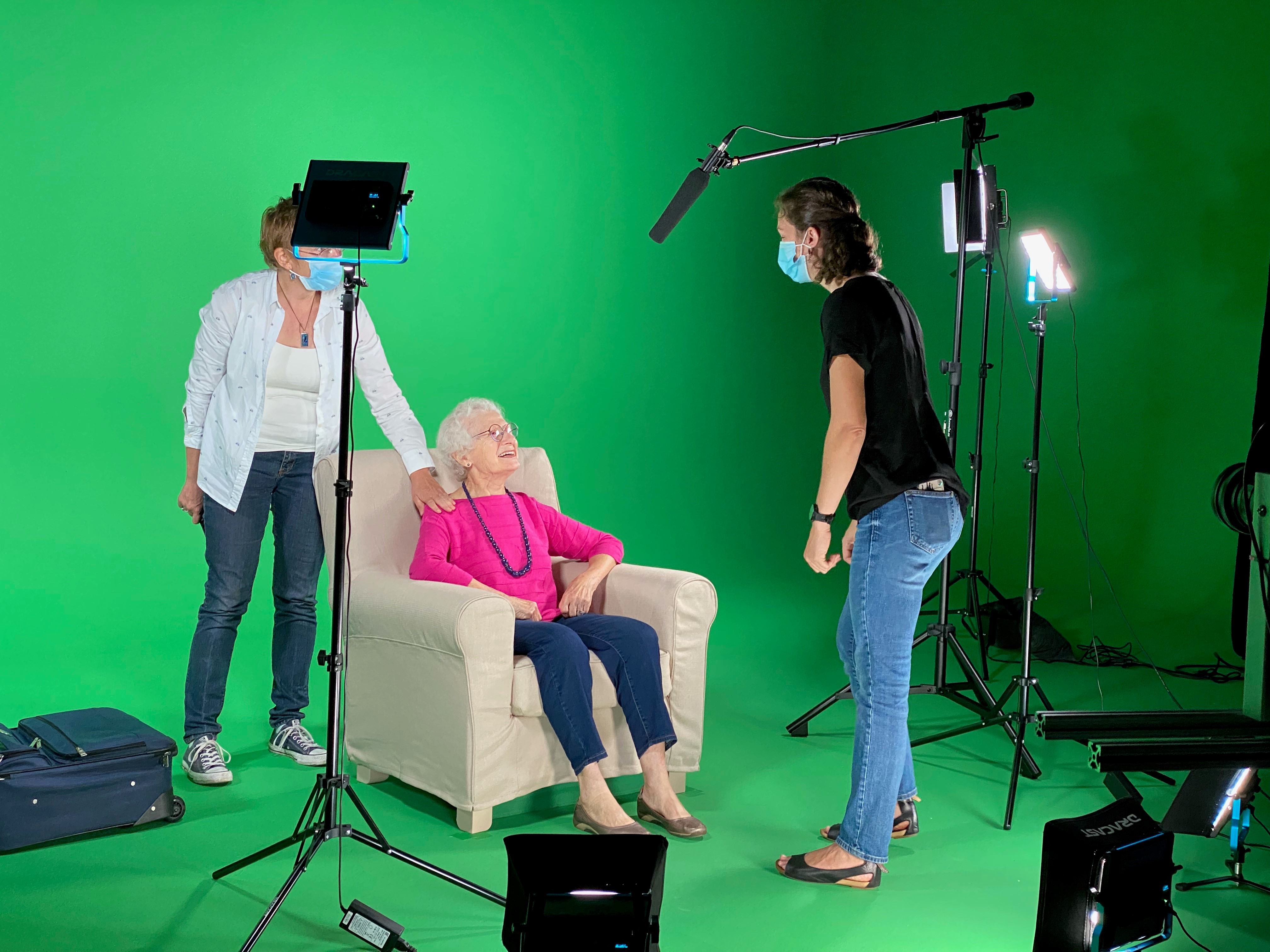When Marguerite Élias Quddus’s 11-year-old grandson asked her what her favourite dessert had been, she replied at once: raspberry tart.
Actually, the boy was not addressing his question to his grandmaman directly, but to an amazingly lifelike 3D image that answered just as she would have in real time, in her natural voice.
Marguerite is the first Holocaust survivor living in Montreal to record her life story with Dimensions in Testimony, a pioneering project of the University of Southern California Shoah Foundation that uses state-of-the-art technology to produce holograms of survivors.
With the huge amount of data pre-recorded, the virtual survivor can respond to just about any relevant question from viewers, who interactwith him or her as if they were there in person.
But does a cherished dessert have anything to do with learning about the Holocaust? In Marguerite’s case it does because that raspberry tart is what one of the last women who hid her during the Second World War made for her.
Marguerite, born in Paris in December 1936, and her older sister Henriette were separated from their parents and hidden together for nearly three years, moving among farms and convents in France.
They were given non-Jewish identities and told to forget everything about their former lives. They learned how to remain silent, to pretend, and to adapt to frequently changing environments.
Marguerite has not remained silent. She has for many years been a volunteer with the Montreal Holocaust Museum (MHM), telling her story in schools and to museum visitors. She also wrote a memoir, In Hiding, published by the Azrieli Foundation.
She agreed to be the first Quebecer to participate in Dimensions in Testimony, when she realized her story preserved in this form will likely have more impact than a regular video or even a book after she dies.
“I thought it was a good thing to leave. People will see me as if I am still alive,” she said.
Marguerite is also the first French-speaker to participate in Dimensions in Testimony among the 27 survivors whose testimonies have been collected since 2014. The others are in English, Spanish, Hebrew, German, Russian, Swedish and Mandarin (one contributor is a survivor of the Nanjing Massacre).
The first participant in the project was a Canadian, Pinchas Gutter of Toronto, a Lodz native who survived six concentration camps. His virtual self premiered at the Illinois Holocaust Museum and Education Center in 2015.
Marguerite’s recording will be housed in a custom-built room at the new MHM scheduled to open in 2025 on St. Laurent Boulevard. It will also be presented at Winnipeg’s Canadian Museum for Human Rights, which is a co-sponsor in the recording.
Members of the public will have an opportunity to test how the technology works on May 11 at 7 p.m. at the MHM, as well as to meet Marguerite in person.
On hand to answer questions about the project will be Edith Umugiraneza, an indexer with the USC Shoah Foundation, and Eszter Andor, the MHM’s commemoration and oral history coordinator.
Marguerite’s testimony will also continue to be open to the public on the first two Sundays of the month, through to July.
Her recording is now in the development stage, and the public’s input on their experience with it will be helpful in making it the best it can be, said MHM communications head Sarah Fogg. The goal is to enable viewers to have as natural a “conversation” with the survivor as possible.
USC Shoah Foundation staff traveled to Montreal with a mobile rig to film her. It is quite a grueling procedure taking place over five days and involving answering more than 700 questions about her experience before, during and after the Holocaust.
Multiple cameras are used to produce a 3D image of the subject, while natural language processing maintains the realism of her speech.
Of course, the technology has its limitations; if questions are asked that are completely off the theme of the Holocaust, prompts will be given to get things back on track.
The producers try to present a well-rounded profile of the survivor as an individual and queries are not restricted to biographical facts, so that question about a favourite dessert might well be in the final version of her testimony.
Marguerite said she felt some trepidation lately hearing about the rise of artificial intelligence, but was reassured Dimensions in Testimony does not manipulate the words of subjects in any way or add any animation.
The MHM, which has a collection of over 870 survivors’ testimonies, is not looking for the time being to record another Dimensions in Testimony subject, said Fogg, because each recording is so costly and time-consuming.
“We are honoured to invite the public to take a behind-the-scenes look at the future of preserving survivor testimony,” stated MHM executive director Daniel Amar.
“The human connection replicated by an interactive biography will allow future generations to discover Marguerite’s story of loss and survival, but also her individuality and resilience. Dimensions in Testimony enables visitors to comprehend the diversity, uniqueness and complexity of each survivor story.”
In August 1941, Marguerite’s father was deported to the Drancy transit camp near Paris and then to the Compiegne camp. From there he was transferred to Auschwitz where he was murdered in April 1942, which the family would not know until after liberation.
In the summer of 1942, Marguerite’s mother began looking for hiding places for herself and her two young daughters, but had to make the painful decision to release them to be sheltered apart from her.
In the spring of 1945, Marguerite and her sister reunited with their mother who had survived under a false identity in Lyon and together they returned to Paris.
In 1965 Marguerite married and two years later the couple immigrated to Canada.
